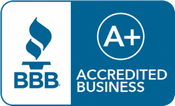
If you don't measure it, how can you improve it #3
Published on March 21, 2011
Adam Boatsman
In my last post, click here, I discussed a real world scenario where Stephanie, the owner of a manufacturing company, has identified the root cause of her cash flow problem and has decided to implement some changes. Now comes the fun part - monitoring results!
I'm a firm believer in monitoring things over a rolling twelve months as it takes volatility and seasonality out of your metrics. Although looming problems don't appear quite as drastic (for example, if you see a 50% sales drop in a month the corresponding rolling twelve month drop might only be 5%) you see a leading indicator drop which will allow you to investigate further. Rolling twelve months means that you simply look at a rolling year (e.g. February to January, March to February) instead of a single period or single year in isolation.
The following are some Key Performance Indicators (KPIs) that I've found useful to measure and are easy to calculate. They are applicable to just about any business (e.g. inventory turnover might be 'unbilled hours' in a professional services firm). To calculate each month, you simply perform the same calculation using a new 'rolling twelve months' of data. The indicators are by our three common symptoms of problems - low cash, low gross margin, and low net profits. Included is a link to a Wikipedia definition for the calculation if available.
- Accounts Receivable Days - the lower the better assuming sales are constant.
- Sales Meetings / Proposals - the more the better - assuming they are with different people and you are seeing movement through your sales pipeline.
- Quick Ratio (less > 90 A/R) - you can't fool yourself with a high A/R balance. The higher the better.
- Inventory Days - dependent on your business. Generally anything 30 days or less is a good target for most businesses.
- Gross Margin % - cost of goods sold relative to sales. The higher the gross profit obviously the better.
- Operating Expenses % - the percentage of operating expenses relative to sales. The lower your operating expenses the better.
- Cash Collected / Full Time Equivalent Employee - this tells you how much cash you collect per employee - it should remain relatively constant over time. If it deteriorates you are less efficient. If it goes too high you may find that your employees are getting burned out.
These are all great starts. There are many more KPIs that are great for a variety of businesses depending on your industry - however these should always be in the foundation of any measurement system. If you implement processes to monitor and gradually improve the metrics in this post I can nearly guarantee you will be successful.






